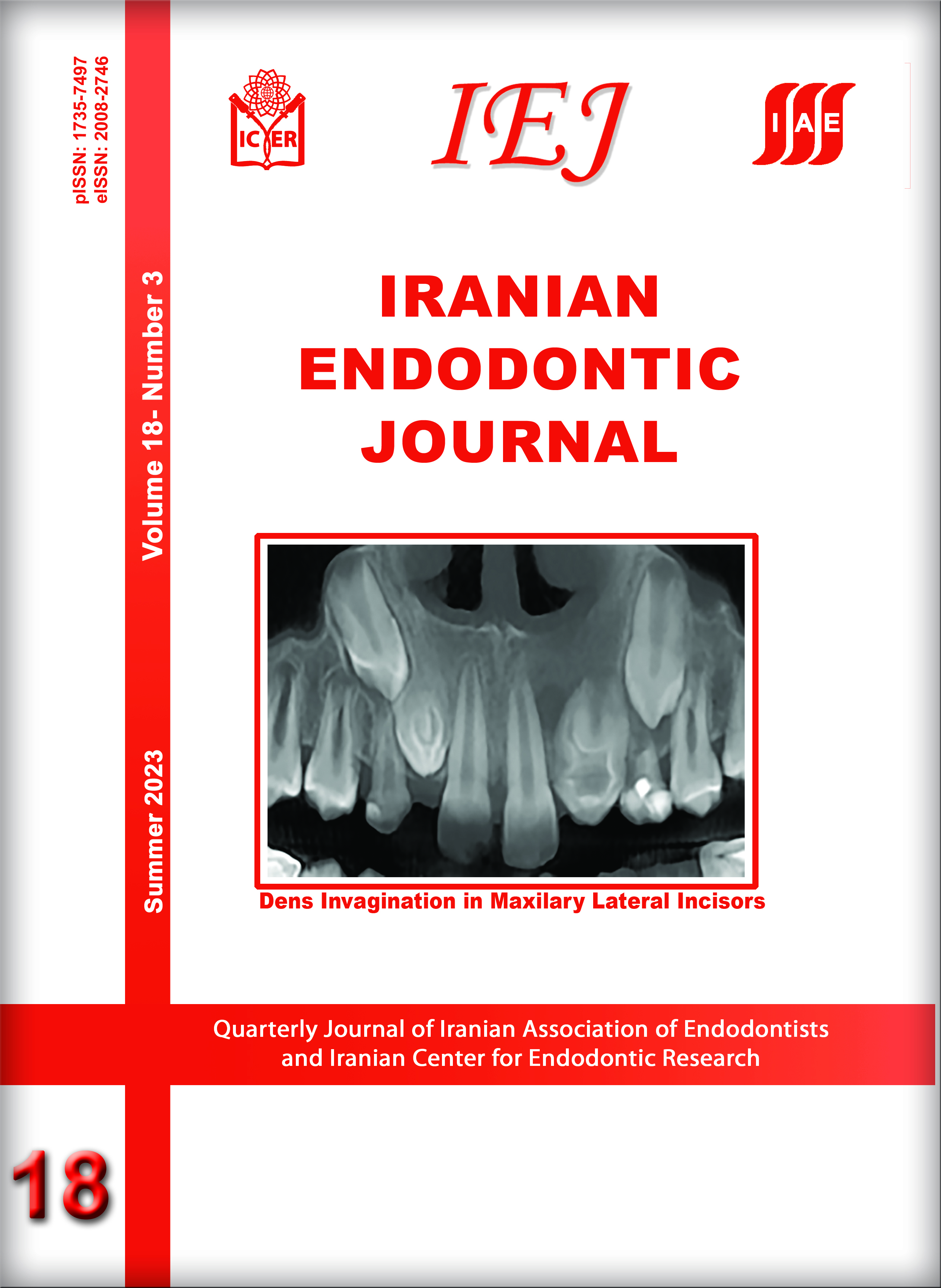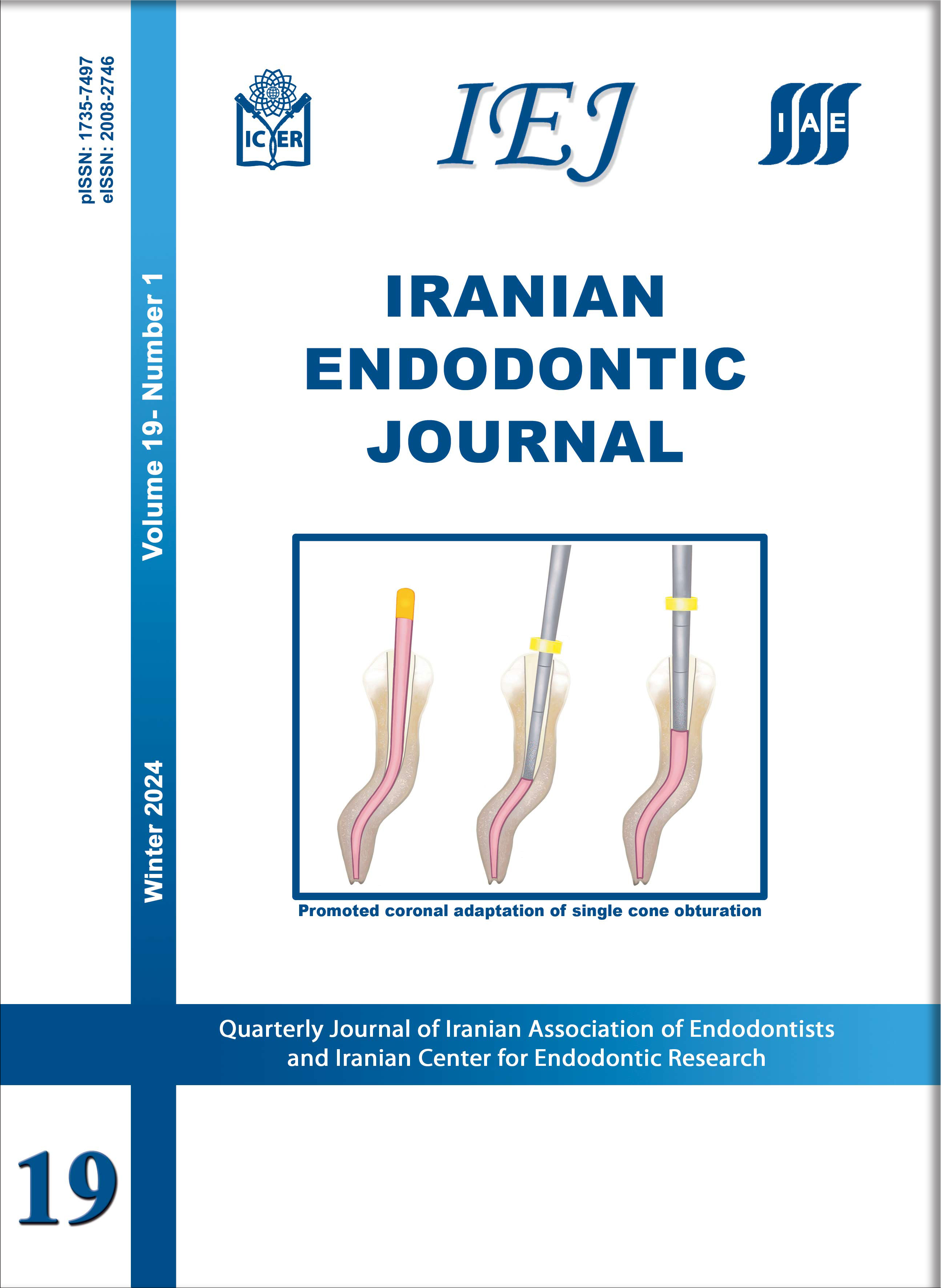A Scoping Review of Highly Cited Published Articles in the Iranian Endodontic Journal: A Reflection of Trends in Endodontic Research
Iranian Endodontic Journal,
Vol. 18 No. 3 (2023),
27 June 2023,
Page 126-133
https://doi.org/10.22037/iej.v18i3.42524
Introduction: Highly cited published articles play a critical role in shaping clinical practice, research directions, and advancements in a specific field of science. The current comprehensive scoping review aimed to provide an overview of highly cited articles published in the “Iranian Endodontic Journal” (IEJ), based on the IEJ’s H-index (=29); highlighting their key findings and prominent implications in the field of endodontics. Materials and Methods: A systematic search was conducted in Scopus database to identify the top 29 highly cited published articles. The articles were selected based on their citation count (h-index); reflecting their impact and influence within the scientific community. Data extraction was performed to gather relevant information; including authors, titles, publication years, and the main topic(s) of each article. Results: The selected highly cited published articles covered a broad range of endodontic topics; demonstrating the diversity and depth of research in the field. Key findings include significant contributions in vital pulp therapy, antimicrobial agents, root canal disinfection, regenerative techniques, cone-beam computed tomography applications, and intracanal medicaments. The distribution of research areas reflects the importance of evidence-based practice in clinical decision-making and patient care. Conclusions: These highly cited published articles have shown to have substantial impact on the field of endodontics. They have influenced clinical practice, guided research directions, and have improved patient care. The summary of key findings from each topic and the number of articles related to each area can provide readers with valuable insights into the distribution of research areas, and the significance of contributions made by the aforementioned highly cited published articles.




